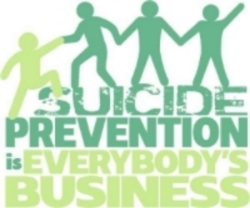April is National Stress Awareness month. If you are feeling stressed or overwhelmed then you are not alone, we all experience some form of stress at one time or another. It could be that commute to and from work or school, a demanding career, a hectic family life, or being affected by a trauma such as divorce, illness, or losing a loved one. Stress takes a toll onmental and physical health. No matter the cause or level of stress, it CAN be managed! Here at the Village, we want to help you make yourself a priority by sharing some stress busting tips from our staff.
Use music to find peace
“My biggest stress relief would be putting on headphones to play music. There is something that music, without any other distractions, does to help relieve my stress.”
-Anthony Calvario, LPC
Refocus by using your senses
“One way to manage stress is through using our senses. We can do this by playing a game of 5s. Anytime you are feeling stressed or overwhelmed stop and try to notice 5 things you can hear, smell, taste, touch and see (pick a color, i.e. 5 things that are green). This can help us to shift focus from our emotions inside of us to the world outside of us.”
-Gretchen Hoffer, MA, NCC, LPC
Release the tension building in your physical body
“Releasing the weight of the world: Create space between your earsand your shoulders by sliding shoulders down and back towards the tailbone. Now breathe deeply. Continue to slide the shoulders further towards your tailbone with each exhalation, soften your throat. Continue to breathe deeply. Massage the muscles of the face with two fingertips. Allow your eyes to soften in their sockets. Drop your tongue. Breathe deeply!”
-Dawn Penney, BC-DMT, LPC, RYT
Just breathe!
“One of the most important things that I tell students/clients is to breathe diaphragmatically. Breathing this way helps to relax our nervous system. Bringing a deep sense of calm to our body and mind. Breath exercise:
You can be seated comfortably lengthening through the crown of your head with your eyes closed. Bring both hands to your stomach and start to breath into them, inhaling and exhaling through the nose. Do this for about 3-5 minutes and then open your eyes and notice how you feel.”
-Abigail Ritter, E-RYT 200, RYT 500
Set healthy boundaries
Learning to set healthy boundaries can be a very effective way of managing stress. Learn how to say no, set your limits and stick to them. Try not to take on more than you know you can handle and avoid people who consistently cause stress in your life.
-Kristy Weidner, LCSW
Prevent stress before it becomes overwhelming
“Create a list of simple and healthy ways to relax and implement one or more of these each day. Establish a short, daily meditation practice or an activity that promotes mindfulness each day to nurture yourself. Prevention is key in managing stress before it has the chance to manifest in unhealthy ways.”
- Victor Barbetti, PhD
Connect with nature
“My favorite stress reduction activity is to interact with nature. Caring for house plants, planting a garden, or going for a quiet walk in the woods on a trail are magical. I forget my troubles when I begin to take in the sights and sounds of the various species of life. I relax as I look at the sky and cloud formations and feel the warmth of the sun on my skin relaxing my shoulders. At night, I enjoy looking at the moon and stars and the vastness of space. For this is the space of peace.”
-Patricia Stewart, LPC
“Taking a walk outside, preferably in a natural area really helps me relax. Take some time to use the senses - listen to the wind or animals, smell the cut grass or mud in the creek bed, feel the warmth of the sun or the coolness of the wind, stop and look up at the clouds or the trees waving in the wind, the leaves falling. Breathe.”
-Angie Phares, Yoga Instructor
Make time for rest
“Here's my new mantra: In rest there is abundance. When we choose to take time to rest and allow the body to sit still and just be, it is not only a physical benefit but emotional and spiritual. When we rest we allow the mind to quiet and space to open up for creativity and new growth. It is counter cultural to say yes to rest, but in many other places in the world rest time or ‘siesta’ is built into the day. It is a value that everyone accepts. Rest, rejuvenate and bring a clear mind and a peaceful body back into circulation with enhanced energy. Let's all commit to stopping and resting, taking our "siesta" daily, even if only for 5 minutes of focused breathing with eyes closed. What abundance we will encounter when we allow ourselves to rest.”
-Rita Lampe, SW, LCSW
We hope this advice speaks to you. Even if you can incorporate just one of these tips, your stress load will feel a little bit lighter!




















